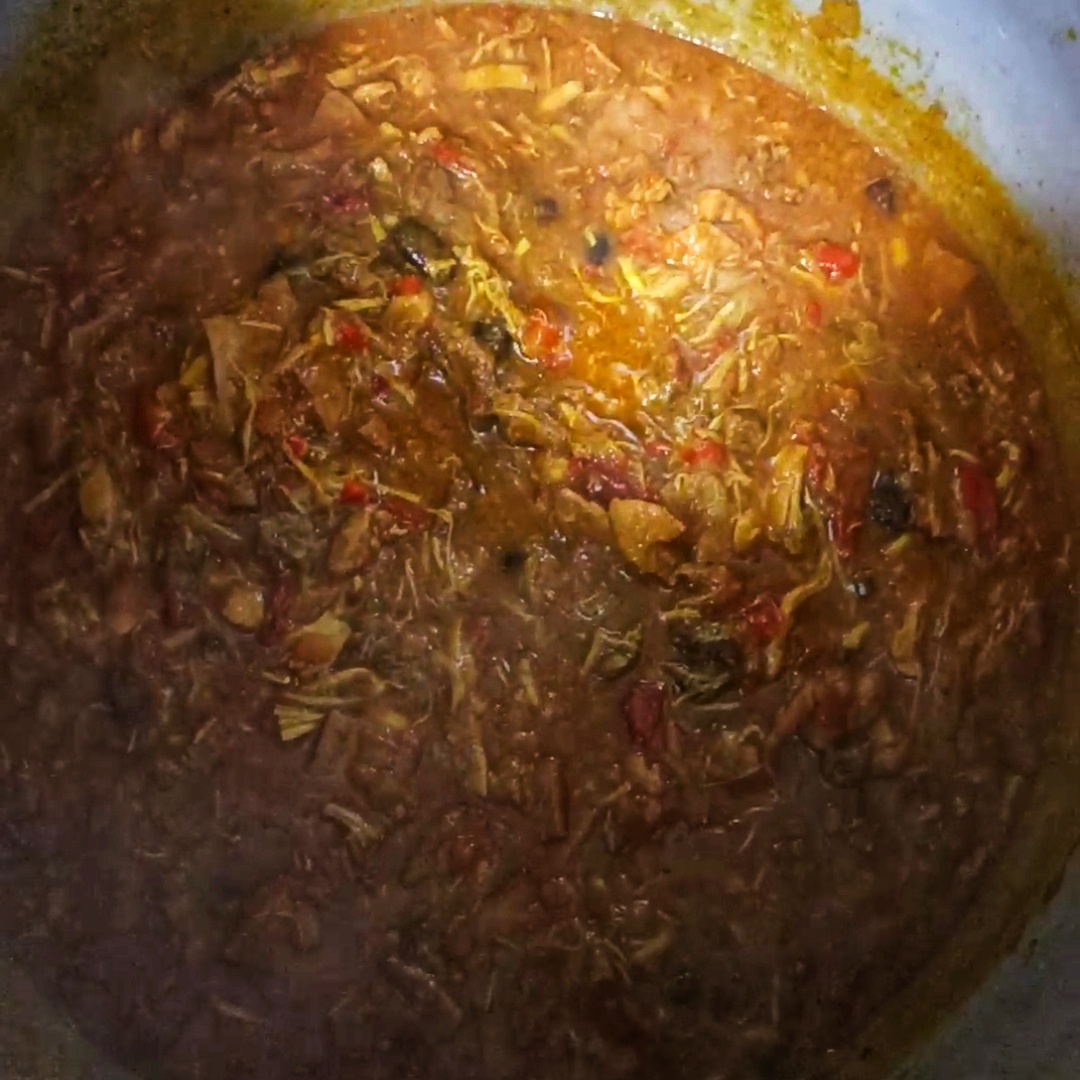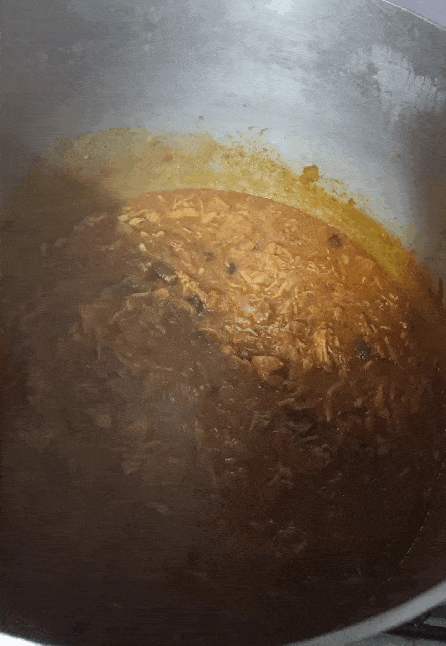Hello everyone, today I bring you this recipe in two parts, it is divided like this because it takes more than a day to make it, so today we will be making only the part of the stew that this recipe has. It is a traditional meal in my country and it is made once a year and we take advantage of the month of December to make it, it is our tradition, they are called Hallacas, very similar to tamales but quite different in flavor.
First we are going to need a hen or chicken, in this case I used chicken, and what we are going to do is in a pot with plenty of water and an onion chopped in half or in four, with a tablespoon of salt, add our chicken and leave cook for 1 HOUR. because we are going to need to reserve the broth and the broth should have a good flavor.
Hola a todos, hoy les traigo esta receta de dos partes, está dividida así porque se toma más de un día realizarla, por lo que el día de hoy estaremos haciendo solamente la parte del guiso que lleva esta receta. Es una comida tradicional en mi país y se hace una vez al año y aprovechamos el mes de Diciembre para hacerla, es nuestra tradición, se llaman Hallacas muy similares a los tamales pero bastante diferentes en el sabor.
Primero vamos a necesitar una gallina o pollo, yo en este caso utilicé pollo, y lo que vamos hacer es en una olla con bastante agua y una cebolla picada a la mitad o en cuatro, con una cucharada de sal, añadimos nuestro pollo y dejaremos cocinar por 1 HORA. porque vamos a necesitar reservar el caldo y el caldo debe tener un buen sabor.
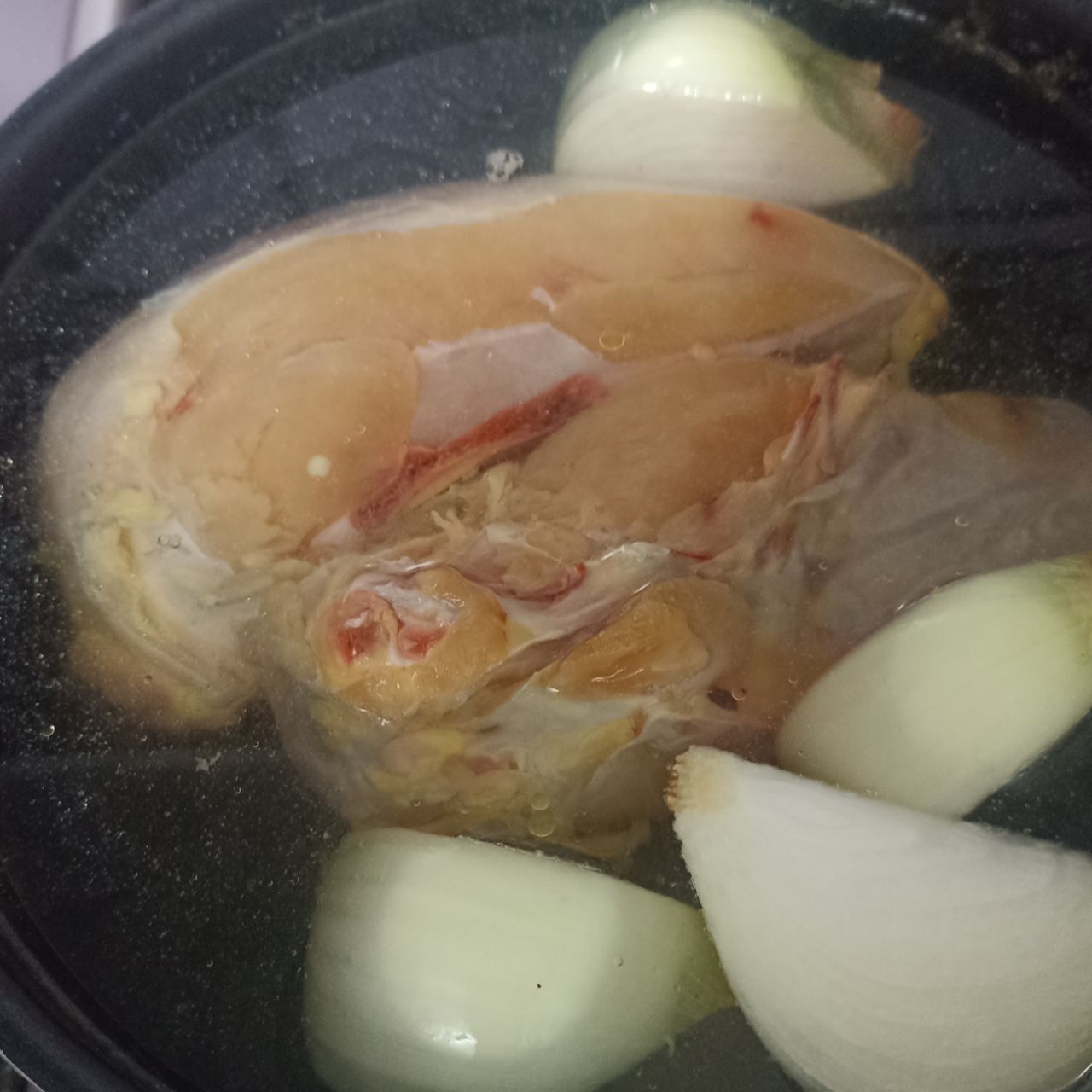
For this recipe we are going to need many ingredients that I am going to mention little by little, we are going to need 1 kilo of pork leg, 1 kilo of beef, 1/2 kilo of bacon and we are going to cut all of this into small cubes while we are waiting for our chicken to cook, we are going to shred the chicken when it is ready.
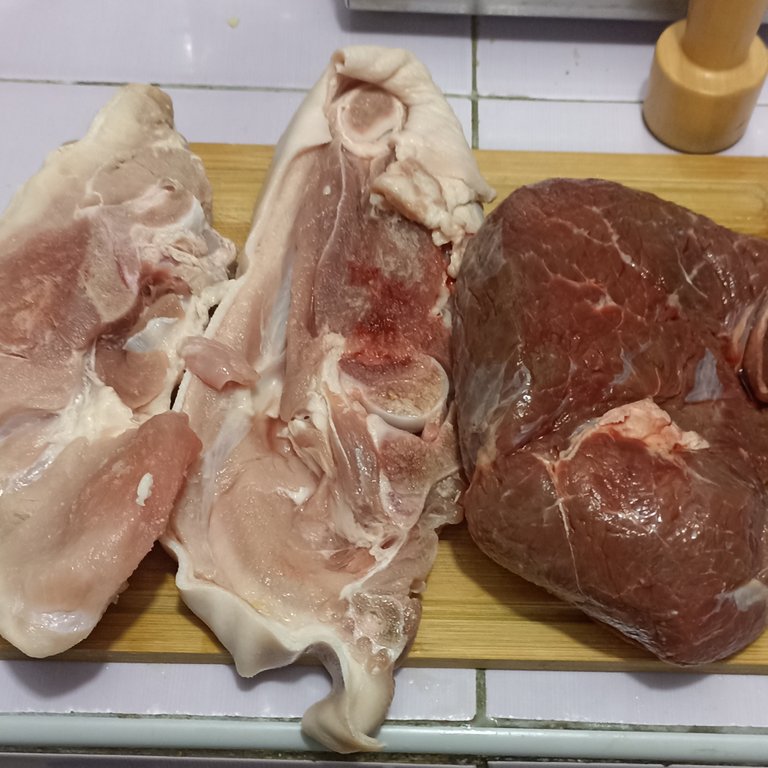
Para esta receta vamos a necesitar muchos ingredientes que los voy a ir mencionando poco a poco, vamos a necesitar 1 kilo de pierna de cerdo, 1 kilo de carne de vaca, 1/2 kilo de tocino y todo esto lo vamos a ir cortar en cubos pequeños mientras vamos esperando que se cocine nuestro pollo, el pollo lo vamos a desmenuzar cuando esté listo.
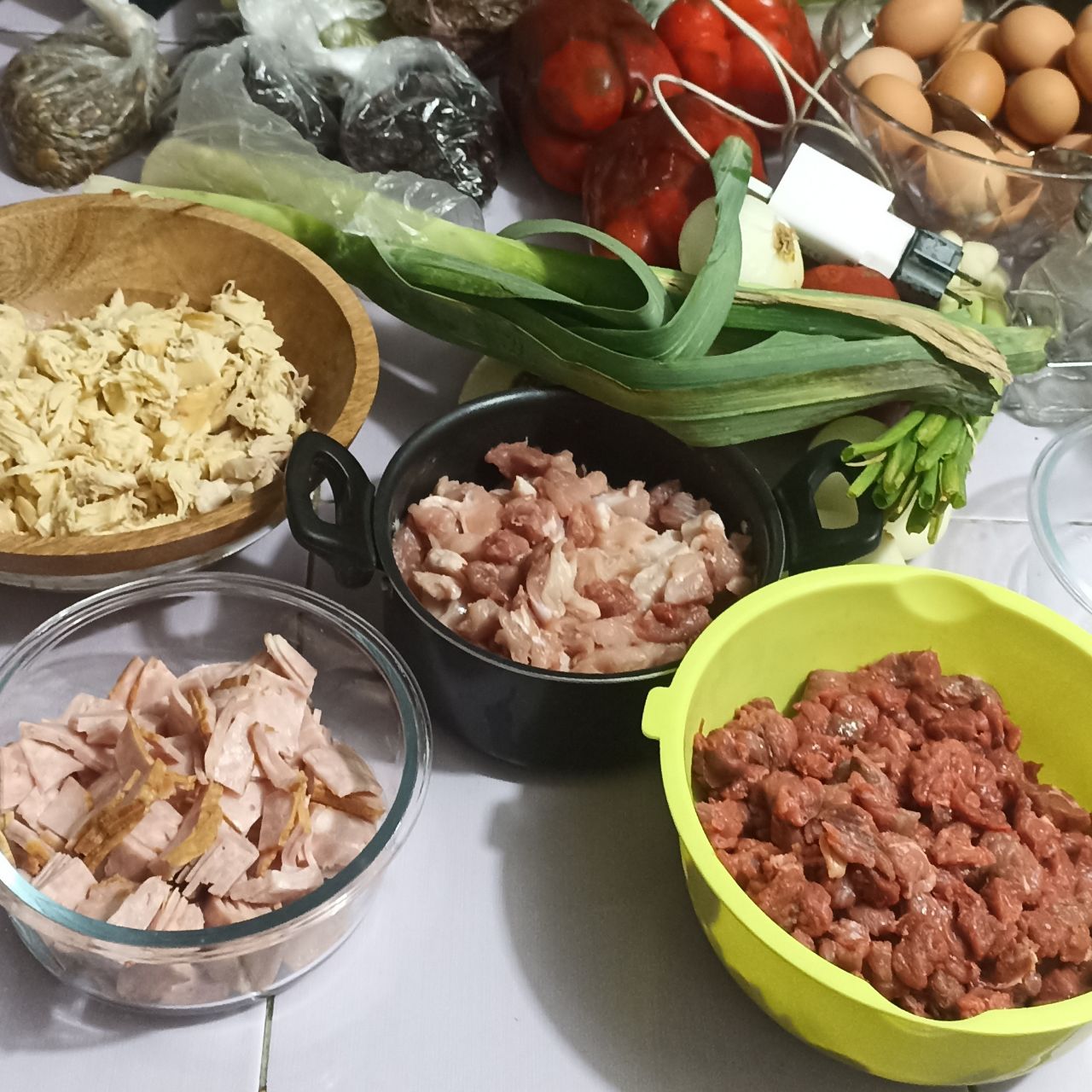
The next thing we are going to need will be the vegetables: 1 1/2 kilograms of onions that we are going to cut into cubes, 1 kilogram of red bell pepper cut into julienne strips, a bunch of chopped chives, 1/2 kilogram of cut leeks, 3 heads of crushed garlic, sweet pepper but I couldn't find it in this country, so I didn't add it and I didn't replace it with anything so as not to ruin the recipe. We are preparing all this, we cut it to have it ready.
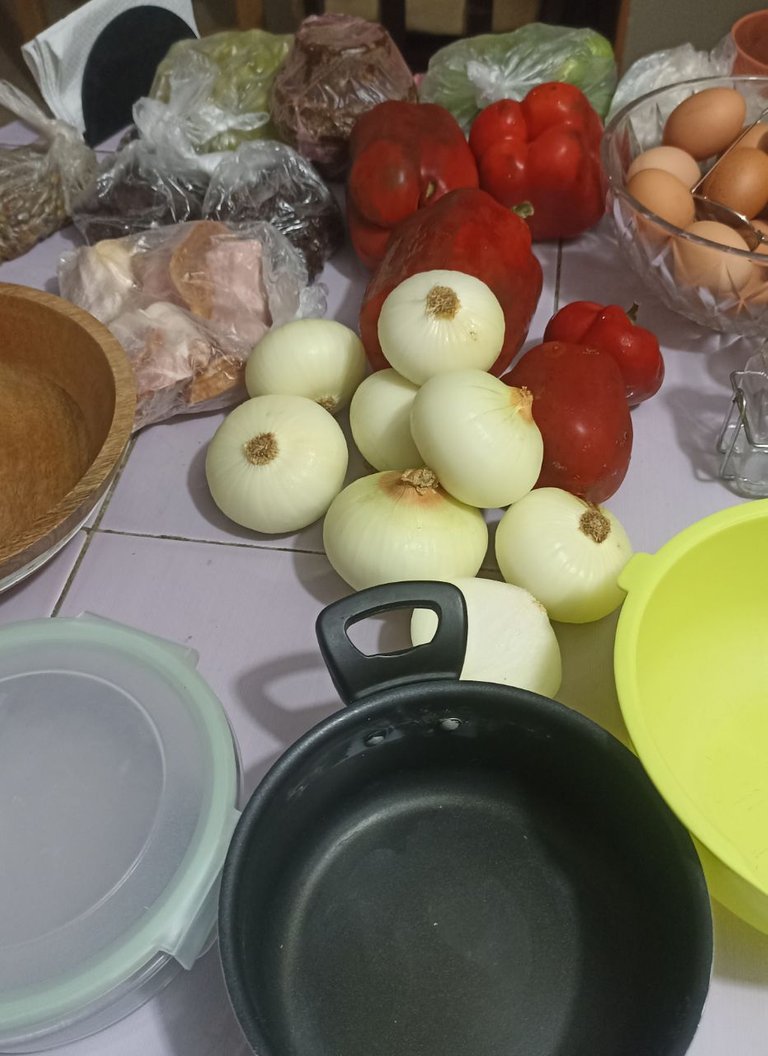
Lo siguiente que vamos a necesitar serán los vegetales: 1 1/2 kilo de cebollas que vamos a cortar en cubitos, 1 kilo de pimentón rojo cortado en julianas, un manojo de cebollín cortado, 1/2 kilo de ajo porro o puerro cortado, 3 cabezas de ajos machacadas, ají dulce pero yo no encontré en este país, así que no le puse y no lo sustituí por nada para no arruinar la receta. Todo esto lo vamos preparando, lo cortamos para tenerlo listo.
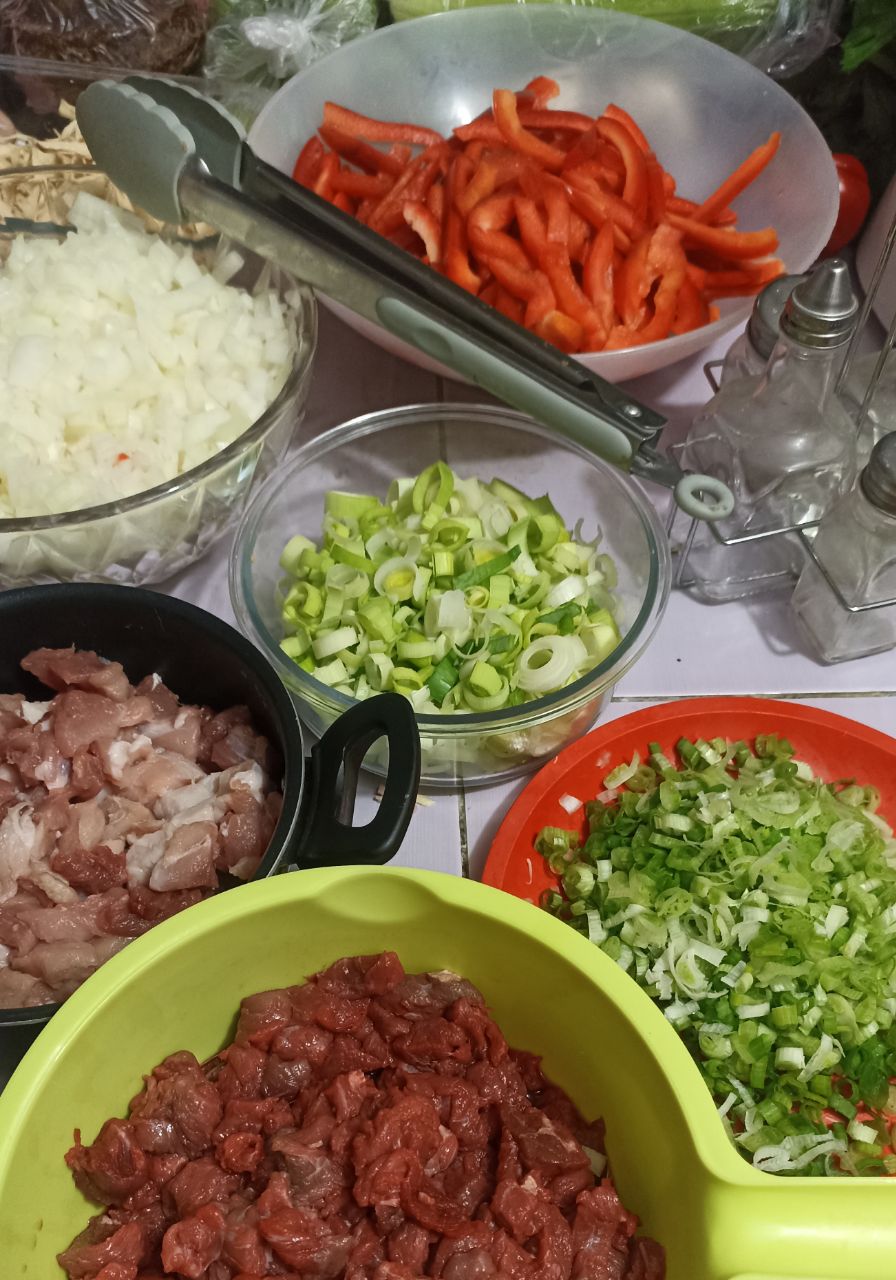
And now to start making the stew, the first thing we are going to need is annatto, we pour 250 ml of oil or 500 ml of oil if you want to do all the preparation at once. What we will do is in a casserole, place the oil and as soon as it begins to heat, add the two tablespoons of annatto and keep stirring until it releases the red color, we must not allow the oil to boil, and before to boil we turn it off and then we can strain it, with a METAL strainer! and so we get rid of the seeds and we are left with a red oil.
Y ahora para empezar a hacer el guiso, lo primero que vamos a necesitar es onoto o achiote, vertemos 250 ml de aceite o 500ml de aceite si desean hacer toda la preparación de una vez. Lo que haremos será en una cazuela colocamos el aceite y apenas empiece a calentar, añadimos las dos cucharadas de onoto y vamos moviendo y moviendo hasta que va soltando el color rojo, no debemos permitir que el aceite hierva, solo que este caliente y antes de hervir lo apagamos y luego lo podemos colar, con un colador de ¡METAL! y así nos deshacemos de las semillas y nos queda un aceite rojo.
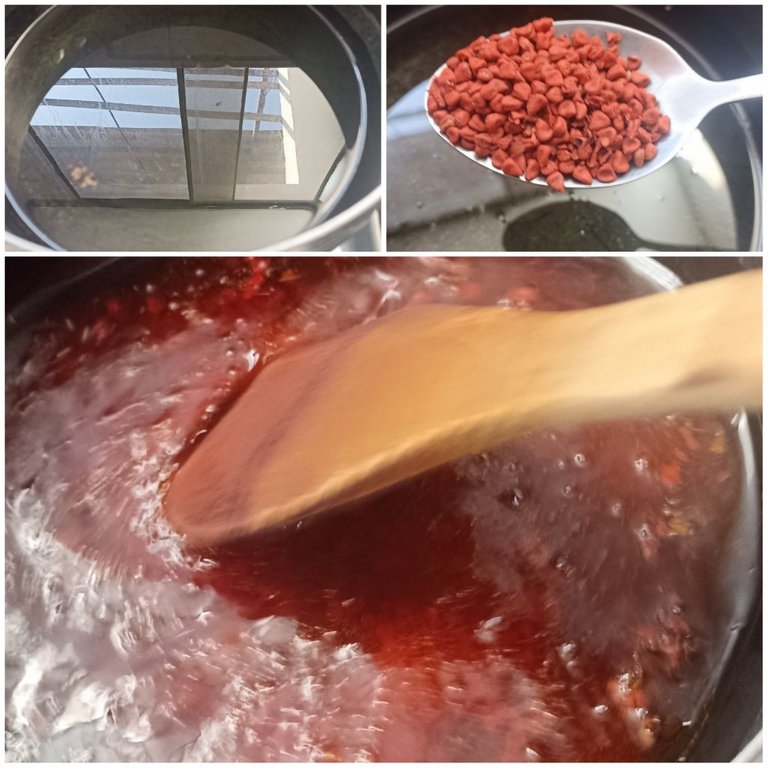
Now we are ready, we put 250 ml of red oil that we have just made in a large pot, this preparation with these ingredients is in a large pot because it is a recipe for 50 HALLACAS, we start by adding the onion and garlic, and let the onion cook for a few minutes.
Ahora sí, colocamos 250 ml de aceite rojo que acabamos de hacer en una olla grande, esta preparación con estos ingredientes es en una olla grande porque es una receta para 50 HALLACAS, empezamos añadiendo la cebolla y el ajo, y dejamos que la cebolla se ponga transparente.
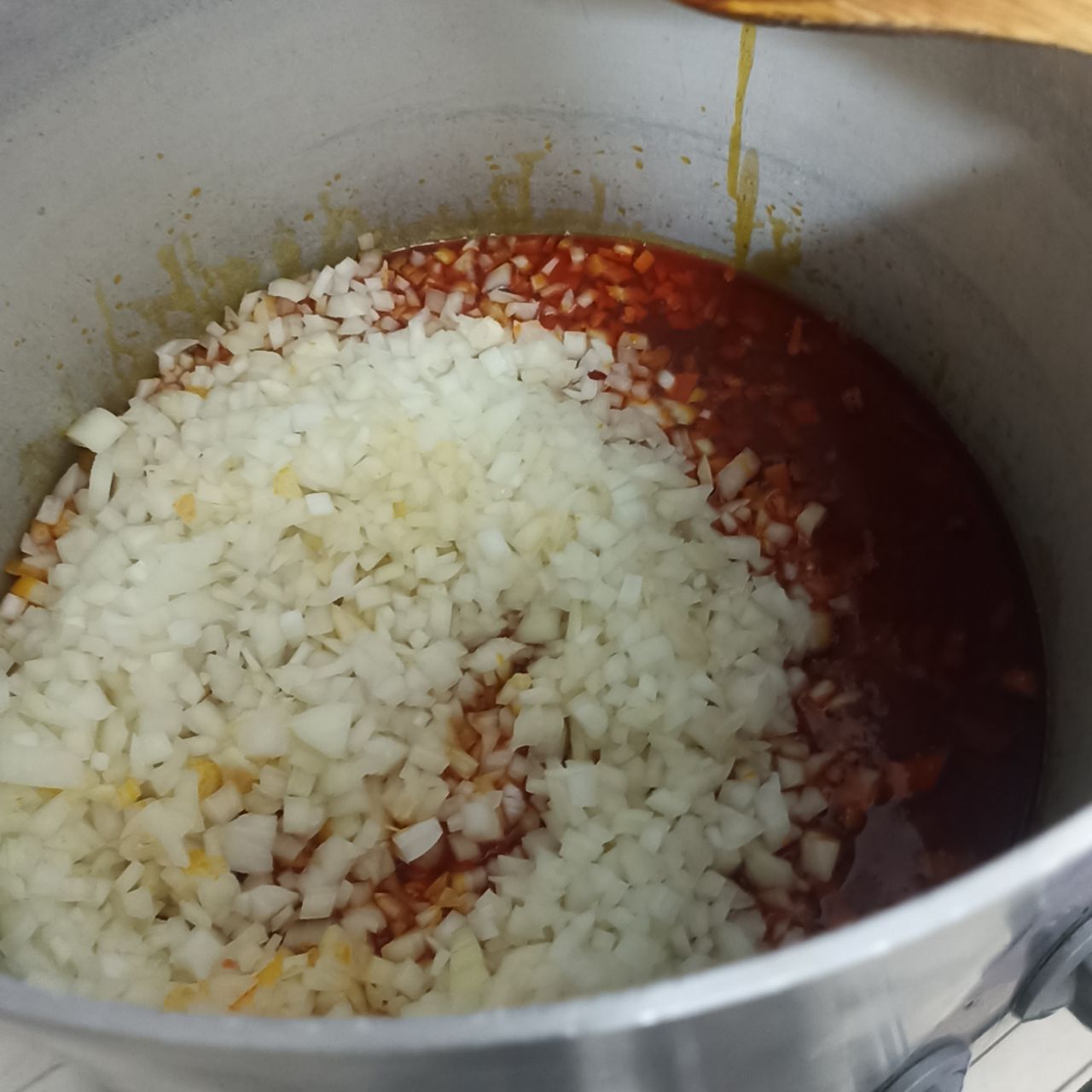
Here we begin to add the leek, chives and bell pepper , and we are going to wait about 5-10 minutes for cooking at this point, since we must wait for the bell pepper to cook a bit.
Aquí empezamos a añadir el ajo porro o puerro, el cebollín y el pimentón, y vamos a esperar unos 5-10 minutos de cocción en este punto, ya que debemos esperar que el pimentón se cocine un poco.
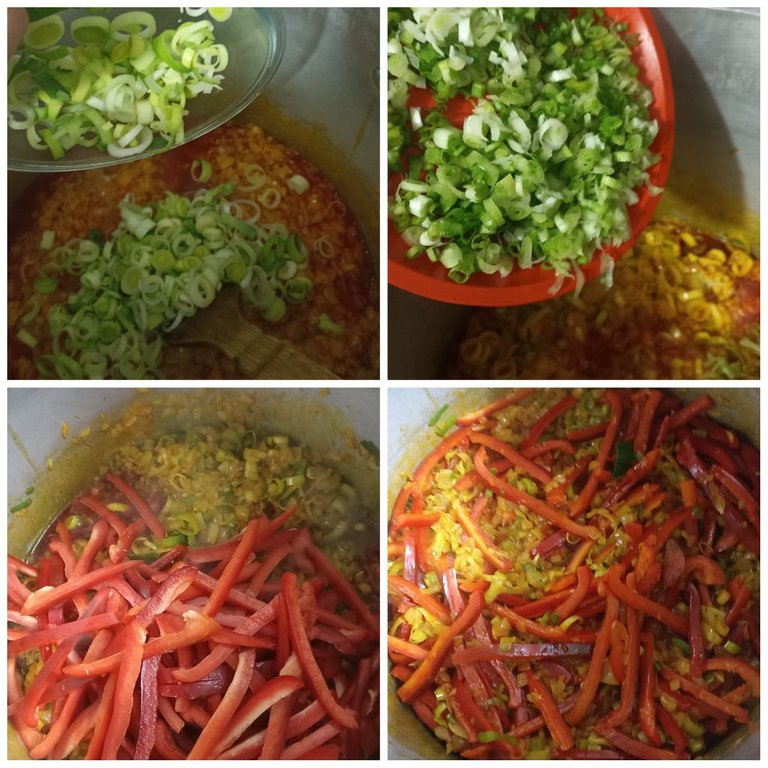
Now is the right time to add the meats, we are going to add the pork leg first and mix, after about 2 minutes we add the meat and finally we add the bacon.
Ahora es el momento adecuado de añadir las carnes, vamos añadiendo primero la pierna de cerdo y mezclamos, al cabo de unos 2 minutos añadimos la carne y por último añadimos el tocino.

We are going to add 500 ml of red wine, 100 grams of capers and 150 grams of raisins, 2 tablespoons of salt and 1 tablespoon of pepper, and some cups (not all) of the chicken broth that we had reserved and we will let all this cook for 20 MINUTES.
Vamos a añadir 500 ml de vino tinto, 100 gramos de alcaparras y 150 gramos de pasas, 2 cucharadas de sal y 1 cucharada de pimienta, y algunas tazas (no todas)del caldo de pollo que habíamos reservado y todo esto lo dejaremos cocinar por 20 MINUTOS.
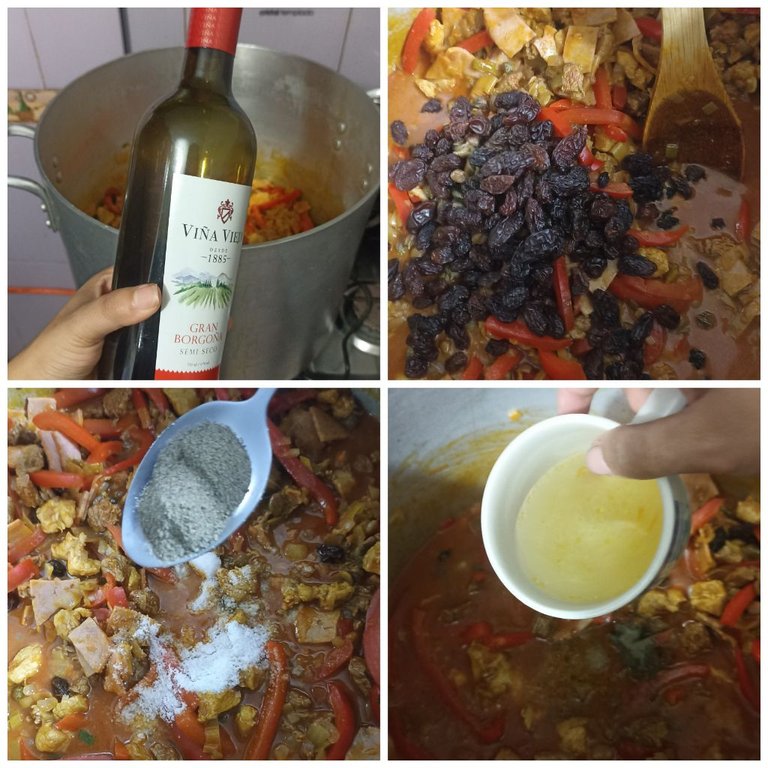
After our first 20 minutes have elapsed, we are going to add the chicken and let it cook again for 20 more MINUTES, yes, in the end it is about an hour of preparation. At this point we check our stew and verify the salt and if it is watery, mine was watery so I added 1 cup of refined white corn flour together with chicken broth, that is, I made a mixture with the flour and the chicken broth before adding it to the pot, and when adding it to the pot, we wait at least 5 more minutes MIXING and our stew will be ready and with the right consistency.
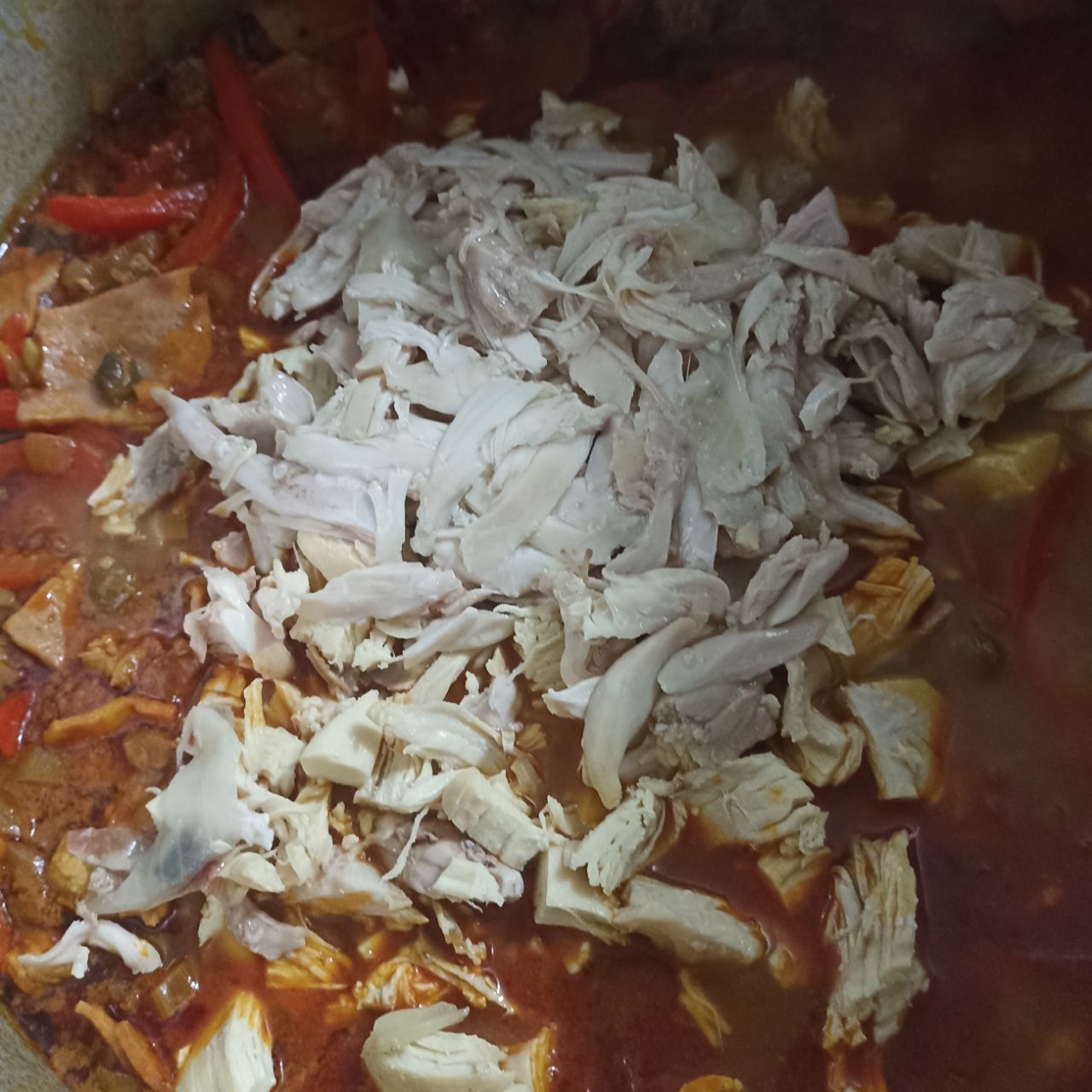
Después que han transcurridos nuestros primeros 20 minutos vamos a añadir, el pollo y volvemos a dejar cocinar por 20 MINUTOS más, sí, al final es como una hora de preparación. En este punto chequeamos nuestro guiso y verificamos la sal y si esta aguado, el mío estaba aguado así que añadí 1 taza de harina de maíz blanco refinado junto con caldo de pollo, es decir hice una mezcla con la harina y el caldo del pollo antes de añadirlo a la olla, y al añadirlo a la olla, esperamos al menos unos 5 minutos más mezclando sin detenernos y ya nuestro guiso estará listo y con la consistencia adecuada.
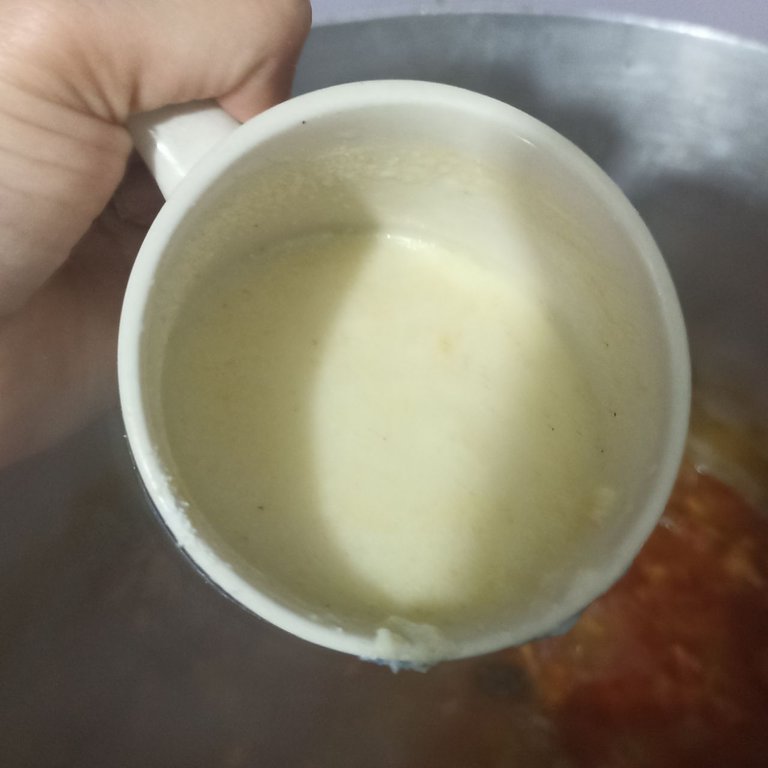
This would be everything from step 1, we must let this stew rest for at least 24 hours, so that the flavor is much better. I assure you that after one day, the taste is totally different. We will wait for it to cool down and from there we proceed to store it in the fridge until tomorrow.
Esto sería todo del paso 1, este guiso debemos dejarlo reposar al menos 24 horas, para que el sabor sea mucho mejor. Se los aseguro que después de un día, el sabor es totalmente diferente. Esperaremos a que se enfríe y de allí procedemos a guardarlo en la nevera hasta mañana.
